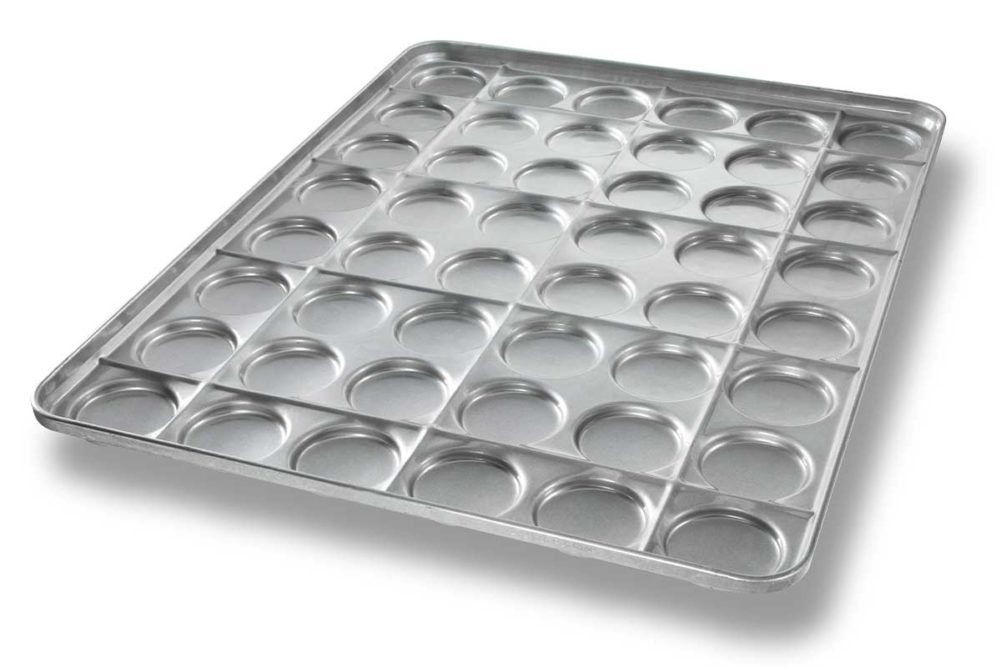In addition to preventative maintenance, bakers making hamburger and hot dog buns should anticipate which parts may need to be replaced to head off problems during the busy season.
“The best strategy to prepare for the busy summer season is to make certain the equipment is well-maintained, serviced and ready to run 24/7,” said Joakim Nordell, export sales manager, Stewart Systems, a Middleby Bakery company. “The supply chain, as we all know, is unreliable, so stock up on consumables and spare parts. Staffing can also be an issue that can be solved with more automation and robotic solutions.”
Proper equipment maintenance can extend the life of machines for a fraction of the price of replacing them, said Bruce Campbell, vice president of global product strategy, AMF Bakery Systems.
“Most bakers know to start ordering those critical items that seem to wear out quicker in the summer months when volume and temperatures are high,” he said.
Bakeries need to have enough pans to run lines continuously, and they should be checked and prepped well before the season begins. The coating on the pans — the glaze — has a life cycle to it, with ratings reflecting the number of times the pan is expected to provide a clean release of a product. There are a variety of glazes providing a wide range of releases. This is dependent on the glaze itself and the types of products in them. Buns or breads that have a lot of inclusions on the outside won’t get as many releases as smooth products.
“You’ll get, low end, 250 releases to an upper end on a glaze in the 380s,” said James Kline, president of The EnSol Group. “And then you get into the more sophisticated coatings, the more expensive coatings; you can get into the 400s and even more.”
Bakeries should strive to have a set of pans that are glazed and ready to sub in when the ones on the line are ready to be reglazed.
“If I’m doing about 50 cycles a week, every six weeks I need to reglaze that pan,” he explained for pans rated at 300. “If I’m trying to run a season, which is 18 weeks, I’m not going to go the whole season with one set of pans. So what you want is your pan set to be sized where you can take out 25% to 30% of the pans and get them reglazed. Put them in, then take out a quarter, get them glazed, and over a period of time you always have fresh pans in the system.”
Wendi Ebbing, vice president of marketing, Bundy Baking Solutions, said the company typically sees bakeries submitting all of its pans at once to be reglazed.
“For pans with a silicone glaze like our Americoat coating, customers will send the entire set to be cleaned and reglazed since we can clean and recoat them and have them back at the bakery in approximately 36 to 48 hours,” she said. “They either schedule to have them recoated on days they are shut down or run other products while one set is being cleaned.”
Jerry Murphy, vice president of sales, Gemini Bakery Equipment, said using larger pans can help increase production.
“Using lines with larger sized pans can allow clients to produce a wider range of products at higher production rates while not overwhelming the proofing and baking systems,” he explained.
Because packaging remains the area often requiring the most labor, Mr. Nordell said special attention should be given to ensuring staff are well-trained to avoid unnecessary equipment stoppages and product rejection.
“The packaging area, retail as well as bulk, is still a sensitive area of the operation, requiring thorough care and redundancy of machines to support upstream equipment,” he said. “Rejection of products in this area is very costly as it has the highest value in the production/value chain.”
Mr. Nordell also suggested that bakeries invest in storage freezers, allowing bakers to stock up on product to alleviate the strong demand during the summer.
This article is an excerpt from the February 2023 issue of Baking & Snack. To read the entire feature on Bun Processing, click here.





